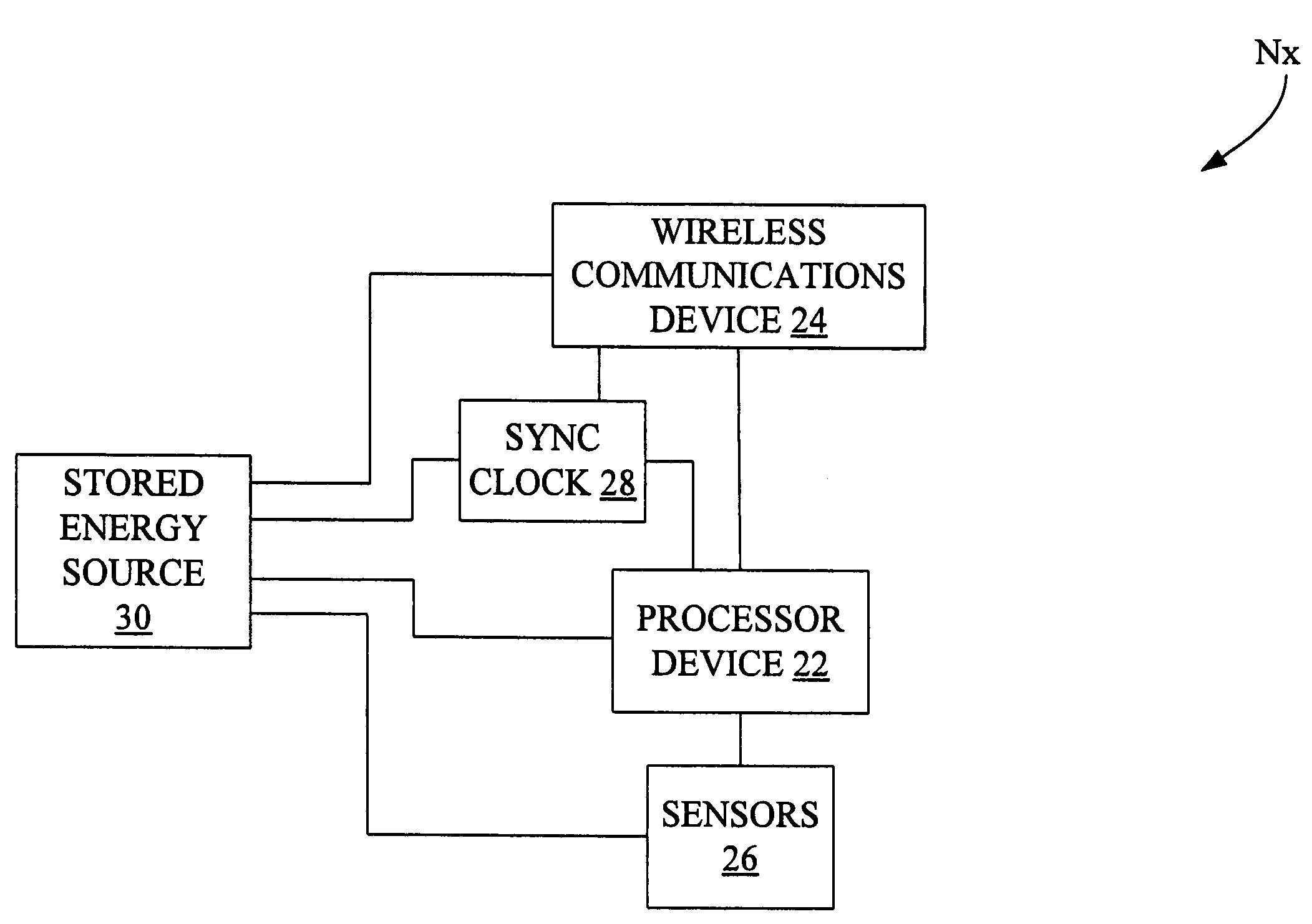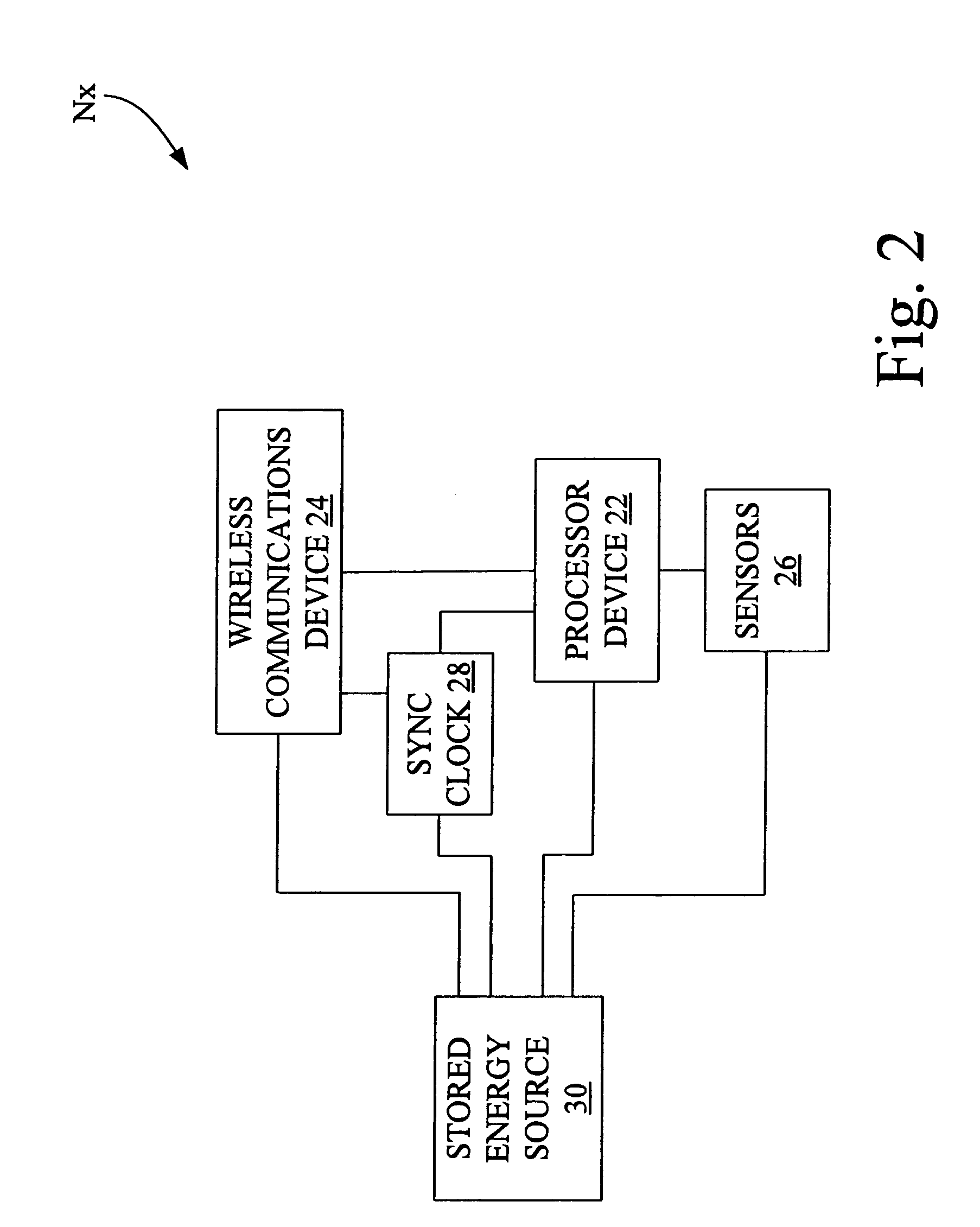Method of regulating wireless sensor network energy use
a wireless sensor and energy use technology, applied in frequency-division multiplex, instruments, fire alarms, etc., can solve the problem of limited power source of sensor nodes
- Summary
- Abstract
- Description
- Claims
- Application Information
AI Technical Summary
Benefits of technology
Problems solved by technology
Method used
Image
Examples
Embodiment Construction
[0013]Referring now to the drawings, there is shown in FIG. 1 a diagrammatic representation of an exemplary wireless sensor network 10 in accordance with an embodiment of the present invention. Network 10 may be, for example, an ad hoc network, and includes a management computer 12, a plurality of access nodes (AP) 14 and a plurality of sensor nodes (N) 16. The plurality of access nodes 14 are individually identified as access point nodes AP1, . . . APn, wherein n is an integer.
[0014]The plurality of sensor nodes 16 are positioned over a sensing region 18, and are individually identified as sensor nodes N1, N2, . . . Nn. Sensor node Nn represents the nth sensor node positioned in sensing region 18, wherein n is an integer. Any particular node Nx (where x is from 1 to n) of the plurality of sensor nodes 16 is able to communicate with one or more other sensor nodes, so as to form multi-hop paths to one or more of the AP nodes 14. Wireless communications paths 20-1 are established bein...
PUM
 Login to View More
Login to View More Abstract
Description
Claims
Application Information
 Login to View More
Login to View More - R&D
- Intellectual Property
- Life Sciences
- Materials
- Tech Scout
- Unparalleled Data Quality
- Higher Quality Content
- 60% Fewer Hallucinations
Browse by: Latest US Patents, China's latest patents, Technical Efficacy Thesaurus, Application Domain, Technology Topic, Popular Technical Reports.
© 2025 PatSnap. All rights reserved.Legal|Privacy policy|Modern Slavery Act Transparency Statement|Sitemap|About US| Contact US: help@patsnap.com



